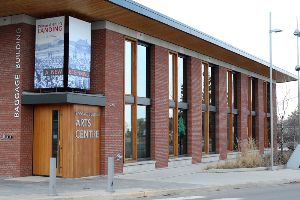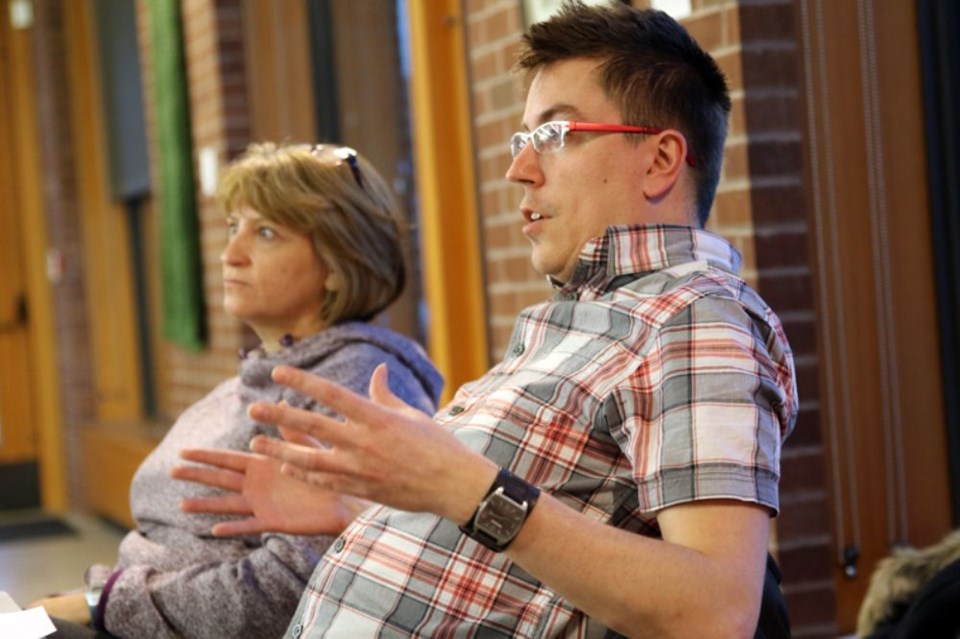THUNDER BAY -- A small group is looking to breathe new life into the city’s creative sector.
The Thunder Bay Creative Council has blossomed from brainstorming meetings it held with the arts community last April. Its core organizers have completed mission statement documents and the time is approaching to reach out for grassroots support.
“Here in Thunder Bay, I think a lot of people have thought it’s painting and photography. Now we’re seeing other things emerge: new theatre groups, youth doing things with interactivity online, coding and all that stuff,” said Brent Kelso, an economic development consultant with INTOLA.
“We’re seeing their work transform from a hobby to something more vibrant and productive. How can we take that to the next level and perhaps employment and being part of something bigger?”
Local artists have attempted to organize a multi-disciplinary arts council on numerous occasions, the most recent of which folded from volunteer burnout eight years ago. Organizers say times have changed and the atmosphere is right to try again.
The 2011 Thunder Bay Culture Plan and the provincial Northern Ontario Growth Plan both cite support for the arts, heritage and culture sectors. The arts council is reinventing itself as a conduit between governments, funders, artists and audiences.
“I think what it comes down to this time is, we have to conform to those rules that allow us to operate,” Kelso said.
“You need an entity for that funding to come through. How can we do it our own way is to have the grassroots drive that and apply the values of a bottom-up process, a community process, and we allow that to naturally gravitate.”
The council’s designers concede significant obstacles exist in aligning the entire spectrum of local cultural producers under one banner. Conflict exists between and within local art scenes. Some artists among the older generation who have worked hard to carve out their space and market have been resistant to efforts to reorganize the sector. Generations of young artists have left the city for bigger markets.
Angie Jensen believes social media and mediation can diffuse conflict and bring artists of different disciplines together to work on larger projects. The end goal is a stronger cultural sector that makes a better living for more artists.
“My job is trying to play with everyone equally and getting everyone to play together,” Jensen said.
“I have different artists willing to share space for different purposes because they only need it one day a week. Before everyone wanted their own space and my job was being that go-between genres of arts and different personalities.”
 Where many similar movements are formed with space as a final objective, the council has a major asset in the Baggage Building Arts Centre. Jensen has the city contract to operate its Gift Gallery and a mandate to foster arts movements under its roof. The local potter’s guild is among those who have already adopted the space.
Where many similar movements are formed with space as a final objective, the council has a major asset in the Baggage Building Arts Centre. Jensen has the city contract to operate its Gift Gallery and a mandate to foster arts movements under its roof. The local potter’s guild is among those who have already adopted the space.
Collaborative space potential doesn’t end with the Baggage Building. Thunder Bay has hundreds of vacant commercial and low industrial spaces. Between public funding and artist collaborations, the council could make studio and storefront space available to more artists.
The council will hold meetings in May to form its board and generate a mandate from the grassroots arts community.
“It’s going to be a messy space for the next decade,” Kelso said.
“At our first meeting, we had some of the older generation saying, ‘we’ve been talking and talking. Let’s get on with this.’ We have the younger generation saying, ‘is this going to happen? Because I’ve been hearing this doesn’t go anywhere.”
“I think overall, we’re moving from an ad-hoc patchwork and we’re trying to bring it all together in a cohesive way, strengthen numbers, strengthen coordination and having strength in revenue streams is helping this to move forward – whatever the outcomes are going to be.”
Sign in or register
- Messages
- Post a Listing
- Your Listings
- Your Profile
- Your Subscriptions
- Your Likes
- Your Business
- Support Local News
- Payment History
Registered Users
Already have an account?
New Users
Create a free account.

.png;w=120;h=80;mode=crop)


.jpg;w=120;h=80;mode=crop)
